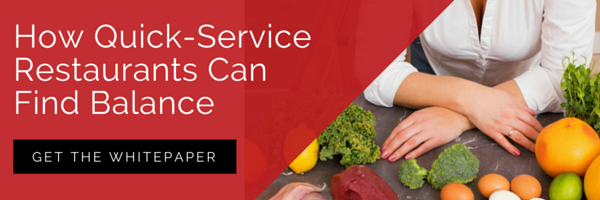
Even as the economy has navigated twists, turns and economic uncertainty, Americans' appetite for eating out doesn't seem to have diminished. In fact, muses Forbes' Darren Tristano, traditional QSR restaurants have found new rivals in a segment dubbed “QSR-plus,” which takes the QSR concept and simplifies its menus while elevating ingredient quality. What does this shift mean to the fast food supply chain? It means that partners across the chain, from growers and manufacturers to distributors, need to be prepared to recognize and master unique challenges, particularly in sourcing and safe transport-storage routes.
Old Methods and New Products Collide
The emergence of QSR-plus has placed particular emphasis on ingredients and prepared food products in specialty sectors — organic, gluten-free, natural and so on. The days of a pinch or sprinkle of a high-end ingredient bringing outsized prestige to a menu item are long gone, courtesy of well-informed consumers. Rather than protecting and preserving the freshness and flavor of that small inclusion-oriented ingredient, items are being built from the ground up and requiring considerably more care in shipping and stocking. Refrigerated trucking with IoT capability, for example, is revolutionizing how ingredients like these are making their requisite journeys. Not only are wired-in trucks more likely to be modern and properly equipped for safeguarding specialty foods, they also offer QSR procurement and distribution efforts unprecedented supply chain transparency.
Remember: Price Is Only One Facet
While cost — both at the operational level and consumer-facing — will always be an important part of procurement, new considerations are gaining ground. With increased demand for locally-sourced ingredients, or specialty foods prepared a certain way, price alone cannot steer the direction of a supply chain. Intelligent scrutiny and striking a balance between ethical, attraction and actual value in food products has never been more important, but it definitely requires more work than it did in years past. Consumers aren't merely seeking these specialty foods out as a supplement to their typical fare, they're exchanging them completely and forcing QSRs, and their distributors, to adapt. In short, when partnering with distributors, QSR chains must keep not only their current needs in mind, but those that might arise in future menu planning and promotions. Even if organic, natural or free-range isn't on the menu right now, it's important for growth-minded QSRs that are eyeing the jump to “plus” status to carefully vet their potential distributors for variety.
A Delicate Touch
When dealing in the kind of massive volumes that successful QSRs command, food safety procedures are fairly standard: chill, freeze, simmer or boil at-risk ingredients at temperatures no food-borne illness can survive. With fresher ingredients, however, the well-intentioned “overkill” can damage the taste, texture and quality in ways that freeze/thaw/steam/cook cycle foods don't have to fear. The cost of experimenting with different transport and storage techniques when adding a delicate specialty ingredient may cause some second-guessing from the budget department initially, but the profit potential in the long run is well worth it. Handlers and preparers throughout the fast food supply chain will also need to familiarize themselves with new food safety procedures before the chain adds new ingredients in earnest. These professionals will need to work with sourcing and logistics to design low-cost ways to keep premium ingredients intact. This extra training may also be a must-have for the sake of compliance; the damage that a food scandal would cause to a brand’s reputation can linger on, even well after unlucky patrons recover.
The fast food supply chain is in the midst of an evolution; in a handful of years the same distributors and methods that are rote today could be hopelessly archaic. If a QSR chain has any plans to expand, change, grow or adjust its menu to accommodate the modern palate, an overhaul of their supply chain is a necessity. Whether it's adding microgreens from a same-state producer or shipping in gluten-free tofu slices from the other end of the country, staying agile, transparent and ready to plan new solutions is the best way for a QSR brand to start chipping away at that coveted QSR-plus wallet share.






